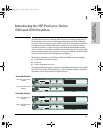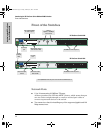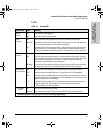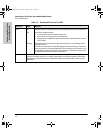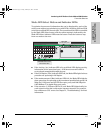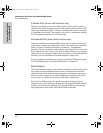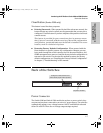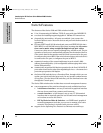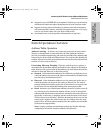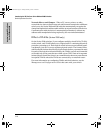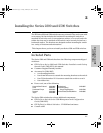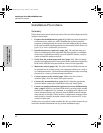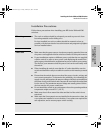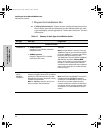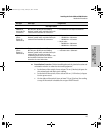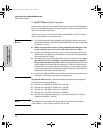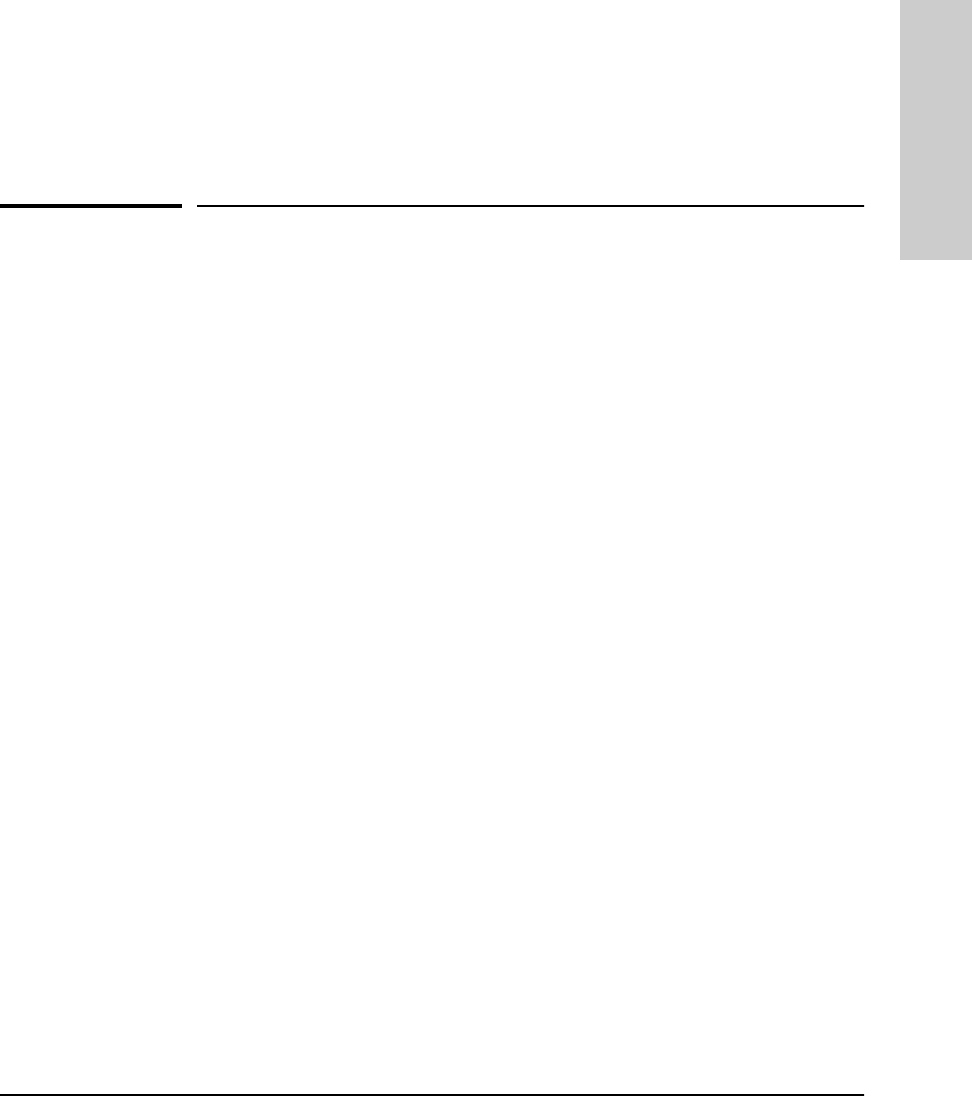
1-9
Introducing the HP ProCurve Series 2300 and 2500 Switches
Switch Operation Overview
Introducing the HP ProCurve
Series 2300 and 2500
■ support for up to 30 IEEE 802.1Q-compliant VLANs so you can divide the
attached end nodes into logical groupings that fit your business needs.
■ support for many advanced features to enhance network performance
and network traffic control—described in the Management and Config-
uration Guide that came with your Series 2500 switch.
■ download of new code for product enhancements or bug fixes.
Switch Operation Overview
Address Table Operation
Address Learning. As devices are connected to the switch ports, either
directly or through hubs or other switches, the MAC addresses of those
devices are learned automatically and stored in the 4096-entry address table
featured by the Series 2300 and 2500 switches. The switches also identify the
number of the port on which each address is learned so they know the network
location of each connected device.
Forwarding, Filtering, Flooding. When the switch receives a packet, it
determines the destination address and looks for the address in the address
table. Based on the port location of that address, the switch then determines
whether to forward, filter-out, or flood the packet.
■ forward - if the destination address is on a different port than the one on
which the packet was received, the packet is forwarded to the destination
port and on to the destination device.
■ filter out - if the destination address is on the same port as the one on
which the packet was received, the packet is filtered out. The switch
thereby isolates local traffic so the rest of the network connected to the
switch does not lose bandwidth dealing with unnecessary traffic.
■ flood - whenever a new destination address is found in a packet received
on a switch port, the destination address will not yet be in the switch’s
address table and the switch cannot know whether to forward or filter out
the packet. In this case, it sends the packet to all the other switch ports.
This is referred to as “flooding”. When the destination device receives the
packet, and it replies, the switch learns the new address from the reply
packet. Then, all future packets destined for that address are forwarded
or filtered out appropriately.
Note: Usually, multicast and broadcast packets are flooded, although
configuration of sofware features influence that behavior.
2353-ed2.book Page 9 Friday, February 9, 2001 6:00 PM



